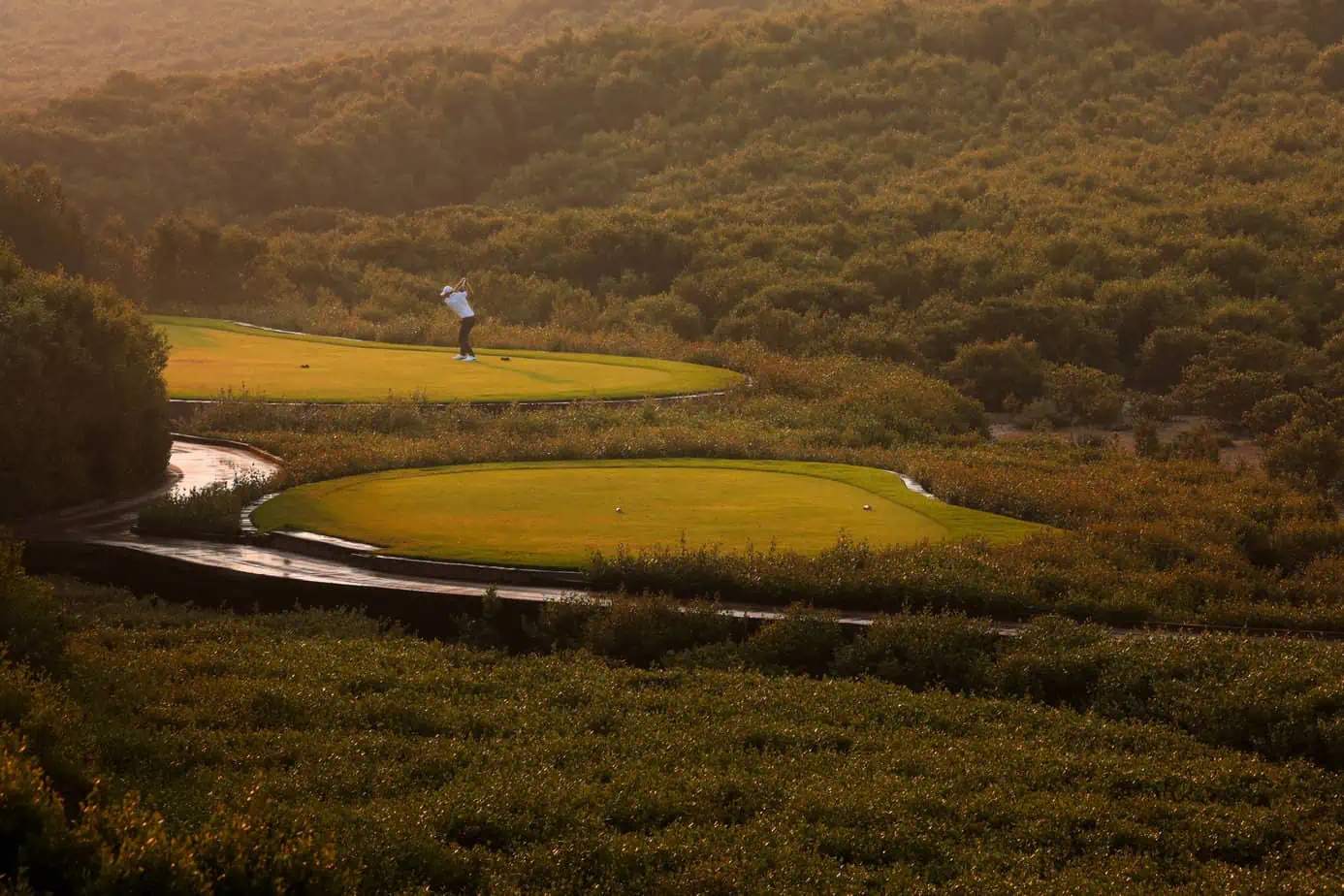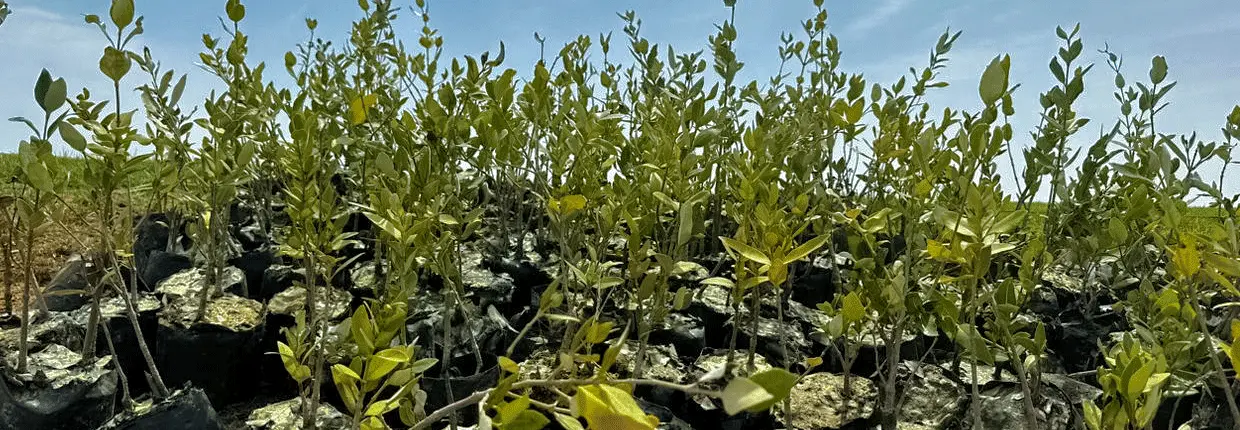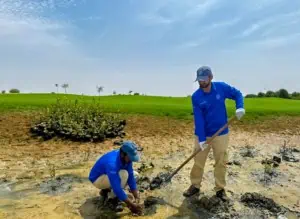Al Zorah: A Golf Club and the World of Mangroves
When it comes to mangroves, Coman Mulry is an expert. The ecosystem is part of his job. You could also say: In the Al Zorah Golf Club in the Emirate of Ajman Superintendent Mulry and his team have developed a certain passion for the plants, of which there are about 15 million hectares left worldwide, but which are increasingly endangered by intensive shrimp farming, climate crisis, drainage and by fossil oil extraction.
Plants have played a major role on the nearly 70-hectare site of the 18-hole golf course since it began operating in 2015. Originally a pure desert site, the golf course and real estate today are directly adjacent to the Al-Zorah Nature Reserve Mangroves, which is listed in the Ramsar Convention International List of protected wetlands with a total area of 1,950,000 m². The total of approximately 484,000 mangrove trees in this area are estimated to sequester approximately 5950 tons of CO₂.
For Coman Mulry and the greenkeepers, this means: Continuous cleaning of the mangrove areas belonging to the golf course from waste that is washed in with the tides. Where the mangroves are in play, they have to be trimmed and thinned, invasive species are removed, new canals and culverts are dug again and again to ensure that the mangroves are irrigated “Since the golf course runs directly along the mangroves, we have a precise management plan to protect this sensitive ecosystem,” explains Mulry, who is responsible for greenkeeping at the course for Troon International. “These include, for example, limiting access to certain areas, or reducing fertilizers or pesticides in the mangrove area to the absolute minimum necessary, monitoring water quality and creating runoffs to prevent contamination.”
Top modern sprinkler system and domestic water
As far as the irrigation of the course is concerned, which in the end also affects the sensitive mangrove system, Al Zorah Golf Club, like most golf courses in the United Arab Emirates, is state-of-the-art anyway. Desert climate and golf course maintenance, that only works together if irrigation is state-of-the-art and municipalities provide premium recycled service water. Unlike in Europe or North America, where some of these systems are still in their infancy, they have always been a necessity here. The extremely high level of maintenance, which is known from many golf courses in the region, as in Al Zorah, cannot be achieved otherwise.
As far as the care of the mangroves is concerned, Troon International has as operator in April this year increased the commitment a bit more. The eleventh hole of the Jack Nicklaus course, which was recently rebuilt, is now surrounded by new mangroves. Around 2,500 mangroves have been planted in an area of around 2,000 m², which was previously covered mainly by shrubbery. For every round of golf played in April, one mangrove was planted. “This initiative is not only beneficial to the environment but also serves as an inspiration to the golf industry as a whole,” sums up Clinton Southern, director of construction and agronomy at Toon International. For the golf course itself, which has also been certified by GEO since November 2022, the incentive remains to take care of the plants every day.
Mangrove habitat is extremely diverse
As unspectacular as the mangrove forests may seem to the golfer from the outside view, they are actually so valuable as a habitat. Because the habitat is partially flooded by the tides, both marine and terrestrial organisms use it. In the upper layers of trees and shrubs live reptiles, small mammals, waterfowl. In the root system you can find snails, algae, crabs and sponges. A diverse habitat, maintained by the greenkeepers and supported by the golfers.









